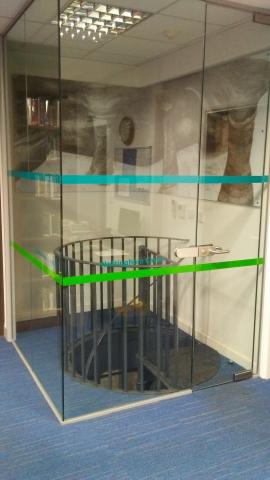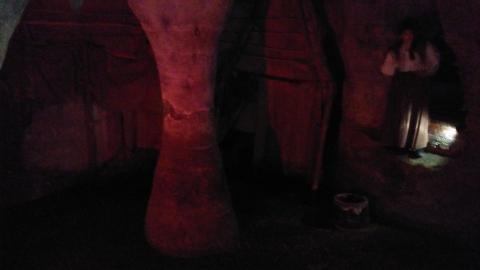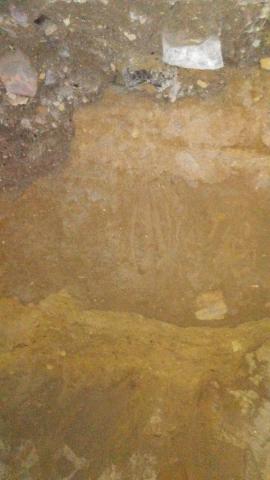Building on Caves

This month I attended an appointment with Dr Riggans, the head of training at the Congregational Federation, which is headquartered in Nottingham. I was intrigued to learn that Nottingham is built on a series of ancient caves and the Federation’s building has access to its very own cavern. These caves go back to Saxon times, if not earlier, and 544 of them have been discovered so far. Nottingham’s original British name was Tig Guocobauc, which means "house/place of caves". It seemed strange walking into the Congregational library to see a glass door in the corner of the room with a stairway into the earth’s bowels.

Later that day, I paid money to visit the City of Caves tourist attraction, a guided tour around the hollows beneath Broadmarsh, which sounds and looks like a prison but is in fact a shopping mall. Some were used as shelters during visits by the Luftwaffe, others were medieval fulling workshops and beer cellars. Helpful information boards described the layers of soil found within the caves by which we were standing. The yellow material in the picture is in fact the solidified contents of a medieval cesspit. The layer above is rubbish from the eighteenth century.

Even we Congregationalists, though arriving late on the ecclesiastical scene, find ourselves built on ancient foundations. We must be careful to ensure that we build our churches and lives on solid ground and not hollow recesses; building upon a labyrinth of caverns does raise questions about safety and security. We must also understand that some of the ground upon which we have built is former generations’ feculence. Just because something is old doesn’t make it right or pleasant.
May our lives’ foundations be God’s word rather than shallow caves or man-made heaps of midden.
Jesus said “Everyone then who hears these words of mine and does them will be like a wise man who built his house on the rock.” Matthew 7:24
- Log in to post comments


 Sunday Worship 10.45am & 6.00pm
Sunday Worship 10.45am & 6.00pm